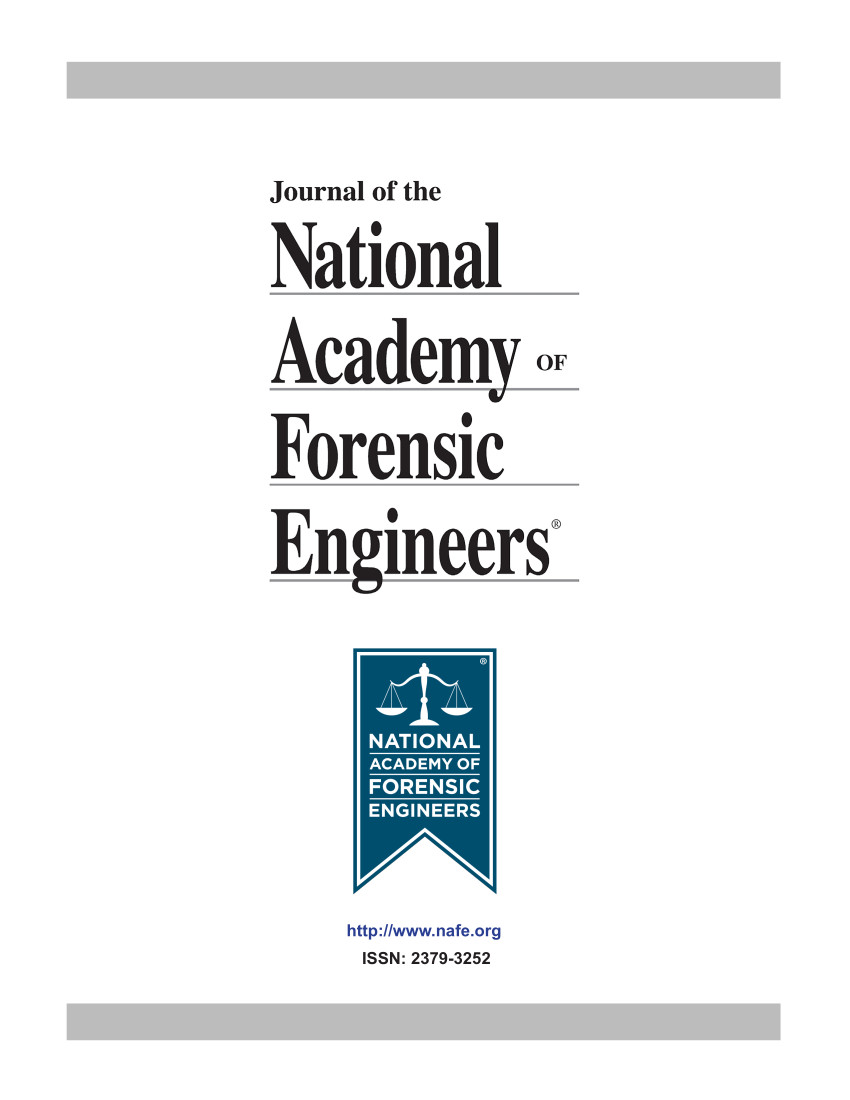Forensic Engineering - Testing Of Hostile Electrical Connections In A Residential Clothes Dryer
DOI:
https://doi.org/10.51501/jotnafe.v20i2.620Keywords:
Electrical fireAbstract
A Fire Occurred In A Residence That Was Being Utilized As A Day Care Center. All Parties Involved In The Initial Investigations Into The Fire Cause Agreed That The Fire Originated In The Laundry Room In The Vicinity Of The Electric Clothes Dryer. The Plaintiffs Expert Opined That The Dryer Was Defectively Designed And Hence Caused The Fire. This Writer Was Retained By The Manufacturer Of The Dryer And Asked To Determine The Most Probable Failure Mode And To Test An Exemplar Dryer In Order To Validate Those Observations. The Ignition Point Appeared To Be At A High Resistance Electrical Connection At The Dryer Heater Box Involving Both Copper And Steel. (See Figure 1) Initial Examination Of The Clothes Dryer At The Residence Revealed That The Dryer Heater Circuitry Connection Had Been Modified. One Of The Male Prongs Had Been Removed, The Insulating Material Stripped Back And The #10 Awg Stranded Copper Wire Was Partially Inserted And Held In Place By A Common Steel Wood Screw. (See Figure 2) The Conductor Strands And The Wood Screw Appeared Heavily Heat Stressed And Appeared To Be A Viable Ignition Source. A Few Inches Away Black Electrical Tape Was Deformed By Heat But Not Fully Combusted. (See Figure 3) This Connection Was Duplicated On An Exemplar Dryer Test Stand And Under Operating Conditions Ignited Lightweight Fabrics.Published
2003-01-01
How to Cite
Owens, Roger L. 2003. “Forensic Engineering - Testing Of Hostile Electrical Connections In A Residential Clothes Dryer”. Journal of the National Academy of Forensic Engineers 20 (2). https://doi.org/10.51501/jotnafe.v20i2.620.
Issue
Section
Articles
License
Copyright (c) 2003 National Academy of Forensic Engineers

This work is licensed under a Creative Commons Attribution-NoDerivatives 4.0 International License.
All rights © Journal of the National Academy of Forensic Engineers.
Full statement regarding the author's license of copyright to the NAFE is shown on the Copyright section of the Submissions Page.






